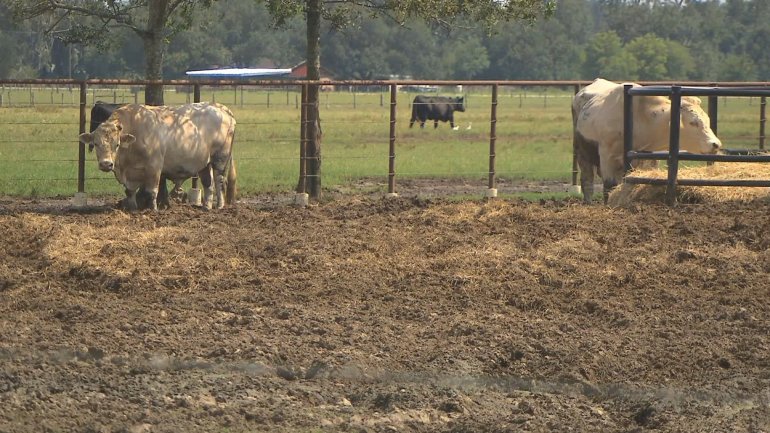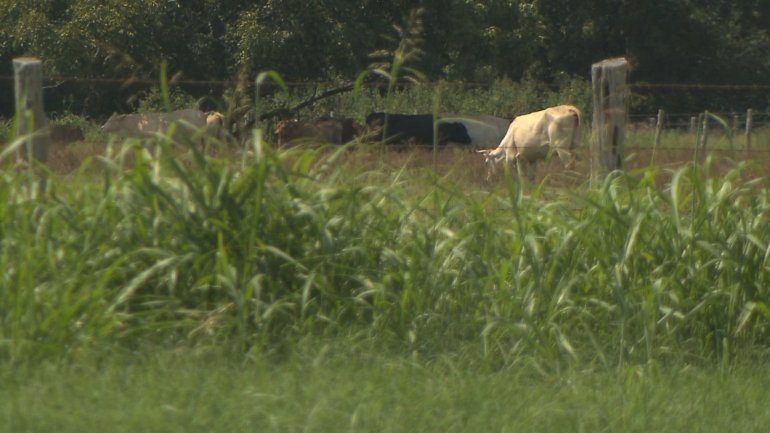TEXAS — Seventh-generation cattle rancher Brandon Cutrer watched as floodwaters from Hurricane Harvey began to rise, threatening to engulf his family farm.
The deadly storm that turned Houston streets into rivers was also transforming vast swathes of grazing land into lakes, destroying crops and stranding countless cattle across southeastern Texas.
Cutrer’s family has 2,000 cattle in Brazoria County, about 45 miles southwest of Houston. The animals are among about 1.2 million beef cows that the US Department of Agriculture says are farmed in the 58 counties — nearly a fourth of Texas’ 254 counties — that Gov. Greg Abbott declared state disaster areas in Harvey’s aftermath.
Texas state Agriculture Commissioner Sid Miller told CNN his agency has no firm estimate on the number of cattle lost during the storm and floods that followed. But he estimates that crops worth $200 million were destroyed — and he expects that number to climb.
Known for his prize-winning Brahman cattle, Cutrer crossbreeds animals and supplies his bulls’ semen to cattle breeders around the world.
“We stake our reputation on each animal we deem worthy of the V8 brand, a symbol of our guarantee.”
The V8 Ranch sits between two rivers — the Brazos and the Colorado. “We literally for the past week were cut off from the rest of the world,” Cutrer said.
Cutrer estimated that about three quarters of his 6,000 acres were submerged. “It hit hard and hit it fast,” he said.
“Some people lost their entire herds, but we’re very fortunate,” Cutrer said.
Team worked around the clock

Before Harvey made landfall, Cutrer, along with family and his cowboy team on horseback drove the cattle to higher ground. But as the rivers swelled the flood area spread and he knew the cattle were in jeopardy. “It was about over my head in several areas of the farm,” said Cutrer.
Cutrer and his family were joined by several friends in the rescue effort. He borrowed an airboat and for the next two days worked around the clock to save his livelihood.
The current was so strong that the cattle were pushed back and destroyed a wooden fence. The swift waters were so powerful they carried hay bales, each weighing up to 1,000 pounds, across the ranch.
After a couple long and wet days, Cutrer was able to save most of his herd.
Waters recede but troubles remain
The losses will extend beyond damaged crops and livestock fatalities. There are some longer-term concerns for the cattle standing in water for a long time. They include foot rot and the risk of disease from mosquitoes.
“We’re really fortunate the water is starting to recede,” Cutrer said.

As the fields dry out, ranchers are faced with a new challenge — feeding the surviving cattle. Cutrer said the majority of the grazing fields are now unusable for feeding or hay production.
“The grass has a brown tint to it from all the mud and silt that was in the floodwater and the cows don’t like to eat it,” he said.
Cutrer and fellow ranchers are forced to dip into their winter reserves to feed their livestock. But as Cutrer pointed out, this devastating flood has only strengthened the community of cattlemen.
“People from all over the country have been sending hay and feed and fencing supplies and all this kind of stuff for farmers and ranchers in this area.”





















